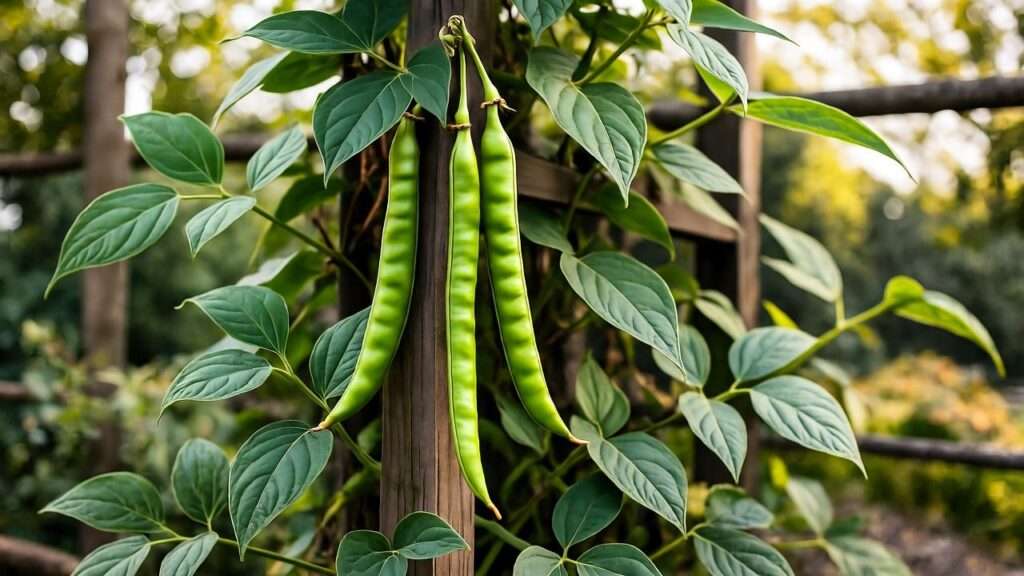Imagine harvesting long, tender asparagus bean pods from your garden, ready to toss into a sizzling stir-fry or crisp salad! 🌿 The asparagus bean plant, also known as the yardlong bean, is a warm-season legume that’s easy to grow, highly productive, and packed with nutrients. Whether you’re a beginner or a seasoned gardener, this comprehensive guide will empower you to cultivate thriving asparagus bean plants with confidence. As a horticulturist with over a decade of experience in legume cultivation, I’ve distilled expert insights and practical tips to help you achieve abundant harvests. From planting to pest control, this article covers everything you need to know to grow healthy asparagus beans and avoid common pitfalls. Let’s dive into the world of this versatile crop and unlock its full potential in your garden! 🌞
1. Understanding the Asparagus Bean Plant 🌿
1.1 What Is an Asparagus Bean Plant?
The asparagus bean (Vigna unguiculata subsp. sesquipedalis), commonly called yardlong bean or Chinese long bean, is a climbing legume known for its impressively long pods, often reaching 12–18 inches. Despite its name, it’s not related to asparagus but earns its moniker from its slender, crisp pods that resemble asparagus spears in texture. This warm-season crop thrives in hot climates, producing high yields of nutritious pods rich in vitamins A, C, and fiber. Its vigorous vines can climb up to 9–12 feet, making it ideal for vertical gardening in small spaces. Asparagus beans are a favorite for home gardeners due to their adaptability, fast growth (60–90 days to harvest), and versatility in dishes like stir-fries, salads, and soups.
1.2 History and Cultural Significance
Originating in Southeast Asia and parts of Africa, asparagus beans have been cultivated for centuries in tropical and subtropical regions. They’re a staple in Asian cuisines, featured in dishes like Thai stir-fried long beans or Indian sabzi. Their cultural significance extends to their role in sustainable agriculture, as they fix nitrogen in the soil, improving fertility for future crops. Today, their popularity is soaring among gardeners worldwide, thanks to their ease of growth and ability to thrive in warm climates, making them a rewarding addition to any vegetable garden.
2. Preparing to Grow Asparagus Beans 🌱
2.1 Choosing the Right Location
Asparagus beans love heat and sunlight, requiring at least 6–8 hours of direct sun daily ☀️. Choose a garden spot with full sun exposure, ideally sheltered from strong winds to protect the delicate vines. The soil should be well-draining and loamy, with a pH between 6.0 and 7.5. Test your soil using a home kit or send a sample to a local extension service to ensure optimal conditions. If drainage is poor, consider raised beds to prevent waterlogging, which can harm the roots.
2.2 Selecting the Best Varieties
Choosing the right variety is key to success. Popular options include:
- Red Noodle: Vibrant red pods with a slightly nutty flavor, ideal for ornamental and culinary use.
- Chinese Green Noodle: Classic green pods, tender and versatile for cooking.
- Stickless Wonder: A shorter-podded variety, great for smaller gardens or containers.
Select disease-resistant varieties if available, especially in humid regions prone to fungal issues. Check with local nurseries or seed catalogs for varieties suited to your climate.
2.3 When to Plant Asparagus Beans
Plant asparagus beans in spring or early summer, after the last frost, when soil temperatures exceed 60°F (16°C). In tropical climates, they can be grown year-round, but in temperate zones, aim for late spring (April–May in the Northern Hemisphere). Planting too early in cold soil can stunt growth or cause seed rot. Use a soil thermometer to confirm ideal conditions before sowing.
3. Planting Asparagus Beans: Step-by-Step Guide 🌾
3.1 Soil Preparation
Healthy soil is the foundation of a thriving asparagus bean plant. Enrich your soil with organic matter like compost or well-rotted manure to boost fertility. Aim for a loose, loamy texture that allows roots to penetrate easily. Test soil pH and amend with lime to raise pH or sulfur to lower it, targeting 6.0–7.5. Incorporate a balanced fertilizer (e.g., 5-10-10) before planting to provide essential nutrients. To improve drainage, mix in perlite or sand if your soil is heavy clay.
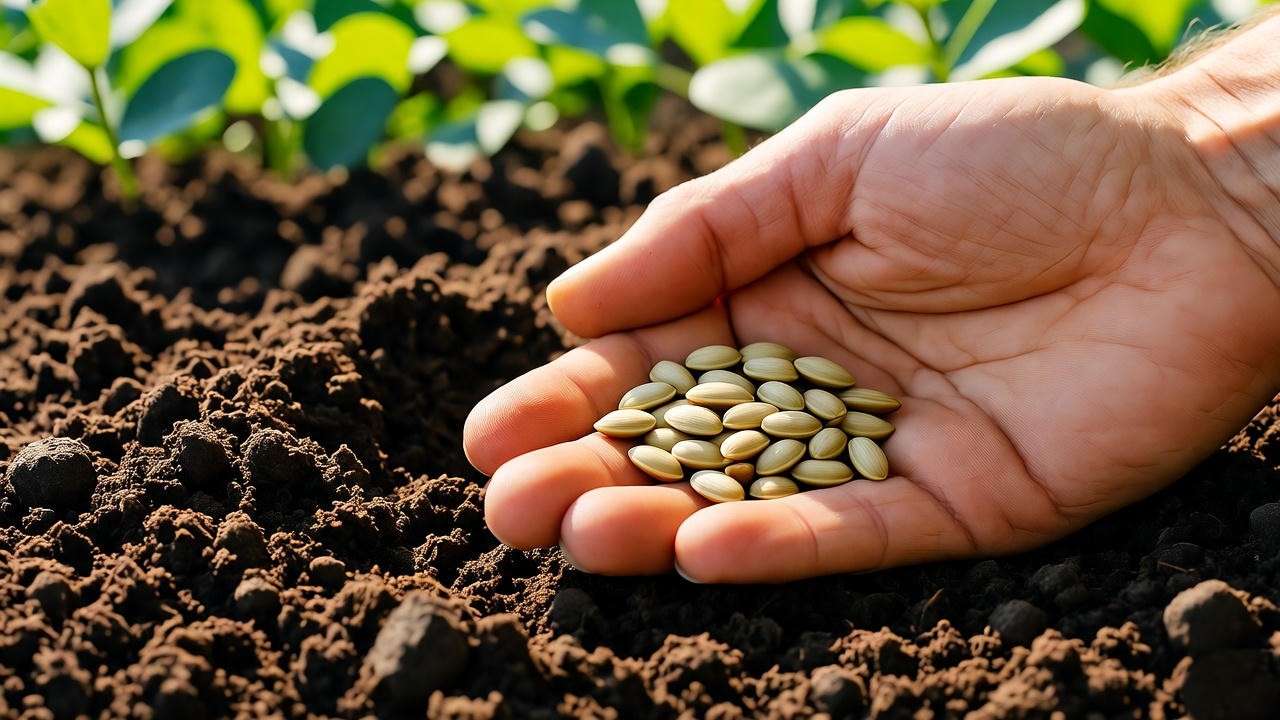
3.2 Sowing Seeds
Asparagus beans are typically sown directly into the garden, as they don’t transplant well. Follow these steps:
- Soak seeds in warm water for 4–6 hours to speed germination.
- Plant seeds 1 inch deep and 6–8 inches apart in rows, or 4–6 inches apart if using a trellis.
- Install supports like bamboo poles, netting, or a sturdy trellis at planting time to avoid disturbing roots later.
Space rows 2–3 feet apart to ensure good air circulation. In small spaces, consider a teepee trellis to maximize vertical growth.

3.3 Watering and Initial Care
Keep soil consistently moist but not waterlogged during germination (7–14 days). Water gently to avoid displacing seeds, using a watering can or low-pressure hose. Once seedlings emerge, apply a 2-inch layer of organic mulch (straw or wood chips) to retain moisture and suppress weeds. Avoid overhead watering to prevent fungal diseases. Expert tip: If germination is slow, check soil temperature and moisture levels—both are critical for success.
4. Caring for Asparagus Bean Plants 🧑🌾
4.1 Watering Requirements
Asparagus beans need about 1–2 inches of water per week, depending on climate and soil type. Water deeply once or twice weekly rather than frequent shallow watering to encourage strong root development. Check soil moisture by inserting a finger 2 inches deep—if it feels dry, it’s time to water. In hot, dry weather, increase watering frequency. Drip irrigation or soaker hoses are ideal for delivering water directly to the roots, minimizing leaf wetness and disease risk.
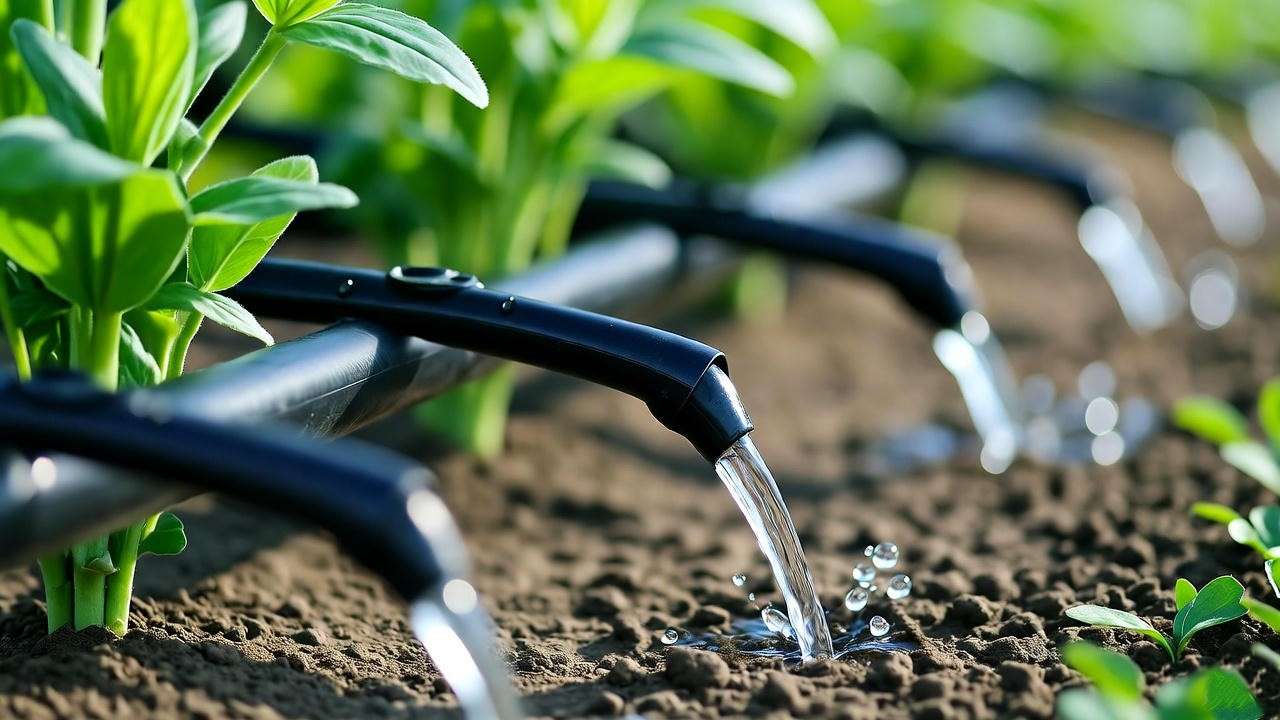
4.2 Fertilizing for Optimal Growth
Asparagus beans are light feeders but benefit from balanced nutrition. Apply a low-nitrogen, high-phosphorus fertilizer (e.g., 5-10-10 or 10-20-20) at planting and again when plants begin flowering. Too much nitrogen can lead to lush foliage but fewer pods. Organic options like fish emulsion or bone meal work well for eco-conscious gardeners. Side-dress with compost mid-season to sustain growth. Expert insight: Over-fertilizing can reduce yields, so follow package instructions carefully.
4.3 Supporting Climbing Vines
As climbing plants, asparagus beans require sturdy supports to thrive. Install a trellis, A-frame, or netting at least 6–8 feet tall to accommodate their vigorous growth. Guide young vines gently onto the support to prevent tangling. DIY trellis ideas include:
- Bamboo Teepee: Arrange 4–6 bamboo poles in a cone shape, tied at the top.
- Netting Frame: Use plastic or nylon netting stretched between posts.
Regularly check vines and redirect them as needed to ensure even growth and easy harvesting.
4.4 Pruning and Maintenance
Pruning is minimal but beneficial. Remove yellowing or damaged leaves to improve air circulation and reduce disease risk. Pinch back excessive vine growth if plants become too dense, focusing energy on pod production. Inspect plants weekly for signs of stress, pests, or disease. Keep the garden bed weed-free to prevent competition for nutrients and water.
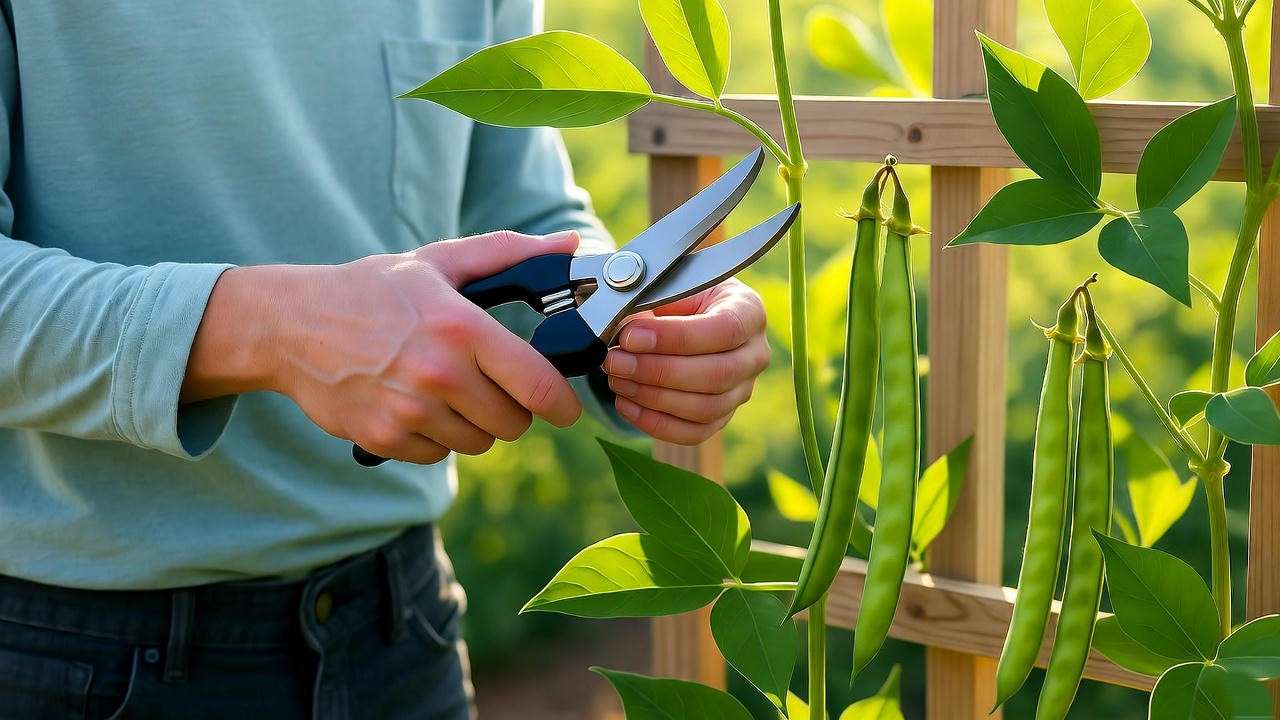
5. Managing Pests and Diseases 🐞
5.1 Common Pests
Asparagus bean plants can attract pests like aphids, bean beetles, and spider mites, which can damage leaves and reduce yields. Here’s how to identify and manage them:
- Aphids: Tiny, sap-sucking insects clustering on new growth. They cause curled leaves and stunted plants. Control with a strong water spray or insecticidal soap.
- Bean Beetles: Small, spotted beetles that chew holes in leaves. Hand-pick adults and use neem oil for larvae.
- Spider Mites: Microscopic pests causing stippled leaves and webbing. Increase humidity and apply organic miticides if infestations persist.
Expert tip: Plant companion plants like marigolds or nasturtiums to deter pests naturally. Introducing beneficial insects, such as ladybugs or lacewings, can also keep aphid populations in check.
5.2 Common Diseases
Asparagus beans are relatively hardy but susceptible to diseases in humid or poorly managed conditions. Key diseases include:
- Powdery Mildew: White, powdery spots on leaves, worsened by high humidity. Prevent with proper spacing and good air circulation. Treat early with organic fungicides like sulfur.
- Root Rot: Caused by overwatering or poor drainage, leading to wilting and yellowing. Ensure well-draining soil and avoid waterlogging.
- Bacterial Blight: Brown, water-soaked spots on leaves or pods. Remove affected plant parts and avoid overhead watering.
Crop rotation every 2–3 years prevents disease buildup in the soil. Sanitize tools and remove plant debris to maintain a healthy garden.
5.3 Proactive Tips for a Healthy Crop
Preventing pest and disease issues is easier than treating them. Follow these expert strategies:
- Rotate crops annually to disrupt pest and disease cycles.
- Monitor weather forecasts, as prolonged wet conditions increase disease risk.
- Keep a garden journal to track pest sightings, disease symptoms, and treatment outcomes for future reference.
Expert insight: Healthy plants are more resistant to pests and diseases, so prioritize soil health, proper watering, and timely fertilization.
6. Harvesting and Storing Asparagus Beans 🥬
6.1 When to Harvest
Harvest asparagus beans when pods are 12–18 inches long, before seeds inside swell and pods become tough. Pods should be firm, crisp, and snap easily when bent. Regular harvesting (every 2–3 days) encourages continuous pod production. In most climates, harvesting begins 60–90 days after planting, depending on the variety and growing conditions. Check pods daily, as they can grow quickly in warm weather.
6.2 How to Harvest
Use clean pruning shears or scissors to cut pods from the vine, leaving a short stem to avoid damaging the plant. Avoid pulling pods, as this can break vines or uproot the plant. Harvest in the early morning when pods are crisp and full of moisture. Wear gloves to protect hands from rough vines. Expert tip: Handle pods gently to prevent bruising, which can reduce storage quality.
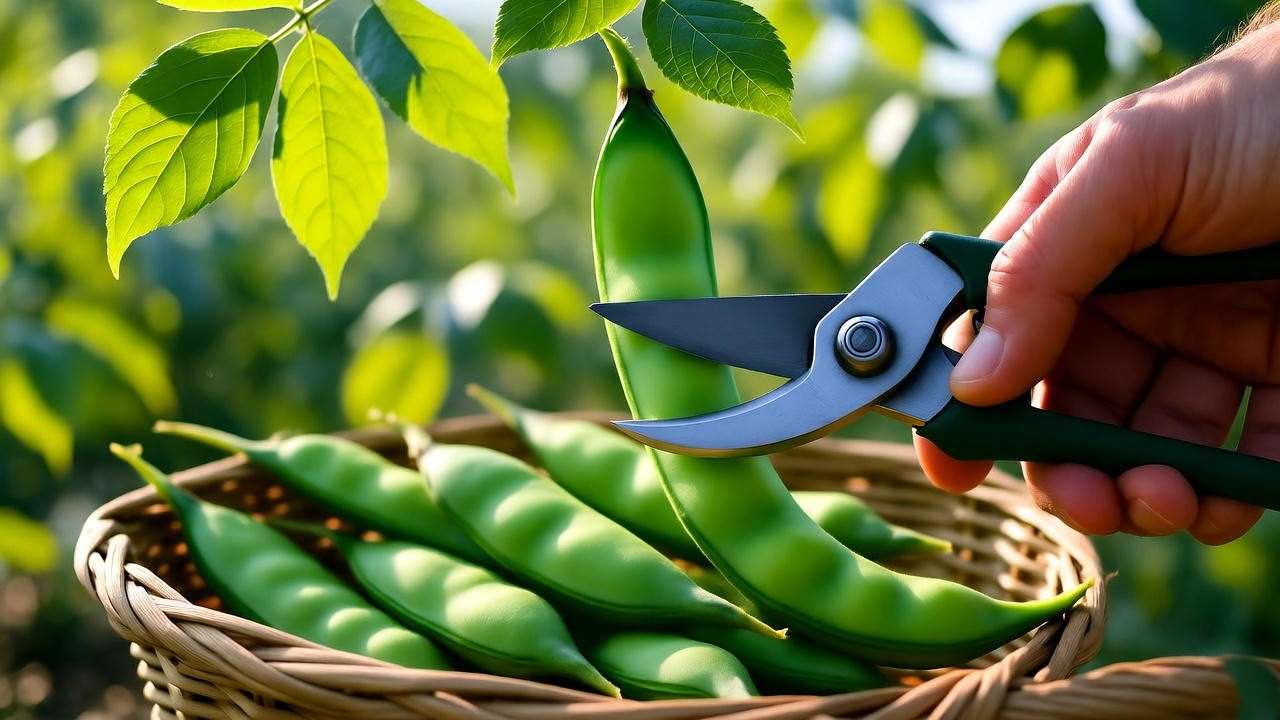
6.3 Storing and Preserving
Fresh asparagus beans store well in the refrigerator for up to 2 weeks. Place unwashed pods in a perforated plastic bag in the crisper drawer to maintain humidity. For long-term storage:
- Freezing: Blanch pods in boiling water for 2–3 minutes, then plunge into ice water. Drain, pat dry, and freeze in airtight bags.
- Pickling: Preserve pods in a vinegar-based brine for a tangy addition to salads or side dishes.
- Drying: Dehydrate pods for use in soups or stews, though this is less common.
Expert insight: Blanching before freezing locks in flavor, color, and nutrients, ensuring high-quality pods for months.
7. Cooking and Enjoying Asparagus Beans 🍽️
7.1 Nutritional Benefits
Asparagus beans are a nutritional powerhouse, offering vitamins A and C, fiber, and antioxidants. A 1-cup serving (about 100 grams) provides approximately 47 calories, 3 grams of protein, and 8 grams of fiber, making them a low-calorie, heart-healthy option. Their high vitamin C content supports immune health, while fiber promotes digestion. Incorporating asparagus beans into your diet adds variety and nutrition to meals.
7.2 Recipe Ideas
Asparagus beans shine in a variety of dishes. Try these simple recipes:
- Garlic Soy Stir-Fry: Sauté 1 pound of asparagus beans with 2 minced garlic cloves, 2 tablespoons soy sauce, and 1 tablespoon sesame oil for 5–7 minutes until tender-crisp. Sprinkle with sesame seeds.
- Asparagus Bean Salad: Toss blanched asparagus beans with cherry tomatoes, red onion, and a sesame-ginger dressing. Add cilantro for extra flavor.
- Curry Side Dish: Simmer chopped asparagus beans in coconut milk with curry paste, garlic, and onions for a creamy, spicy side.
Expert tip: Avoid overcooking to preserve the pods’ crisp texture and vibrant color.
8. Common Mistakes to Avoid 🚫
Even experienced gardeners can make mistakes when growing asparagus beans. Here are pitfalls to watch for:
- Overwatering: Excess water leads to root rot. Ensure proper drainage and water only when the top 2 inches of soil are dry.
- Planting Too Early: Cold soil delays germination and weakens plants. Wait until soil temperatures reach 60°F (16°C).
- Neglecting Trellising: Without support, vines tangle or sprawl, reducing yields and increasing disease risk.
- Over-Fertilizing: Too much nitrogen produces lush foliage but fewer pods. Stick to a balanced fertilizer schedule.
If mistakes occur, act quickly: improve drainage, adjust watering, or add supports to recover plant health. Expert insight: Regularly inspect plants to catch issues early and maintain productivity.
9. FAQs About Growing Asparagus Beans ❓
- How long does it take for asparagus beans to grow?
Most varieties reach harvest in 60–90 days from sowing, depending on climate and care. - Can asparagus beans grow in containers?
Yes, use a 5-gallon pot with a trellis for support. Ensure well-draining soil and full sun. - What companion plants work well with asparagus beans?
Marigolds, nasturtiums, and corn are great companions, deterring pests and enhancing growth. - How do I save seeds for the next season?
Allow some pods to mature and dry on the vine. Collect, dry, and store seeds in a cool, dry place. - Why are my asparagus bean pods tough or stringy?
Pods were likely harvested too late. Pick when pods are 12–18 inches and still tender.
10. Conclusion
Growing asparagus bean plants is a rewarding journey for any gardener, offering abundant harvests, nutritional benefits, and culinary versatility. By following this expert guide, you’ll master the art of cultivating healthy, productive vines, from choosing the right variety to harvesting tender pods. Avoid common mistakes, stay proactive with pest and disease management, and experiment with delicious recipes to enjoy your bounty. Start your asparagus bean adventure today and share your success stories or favorite recipes in the comments below! 🌱 Happy gardening!

